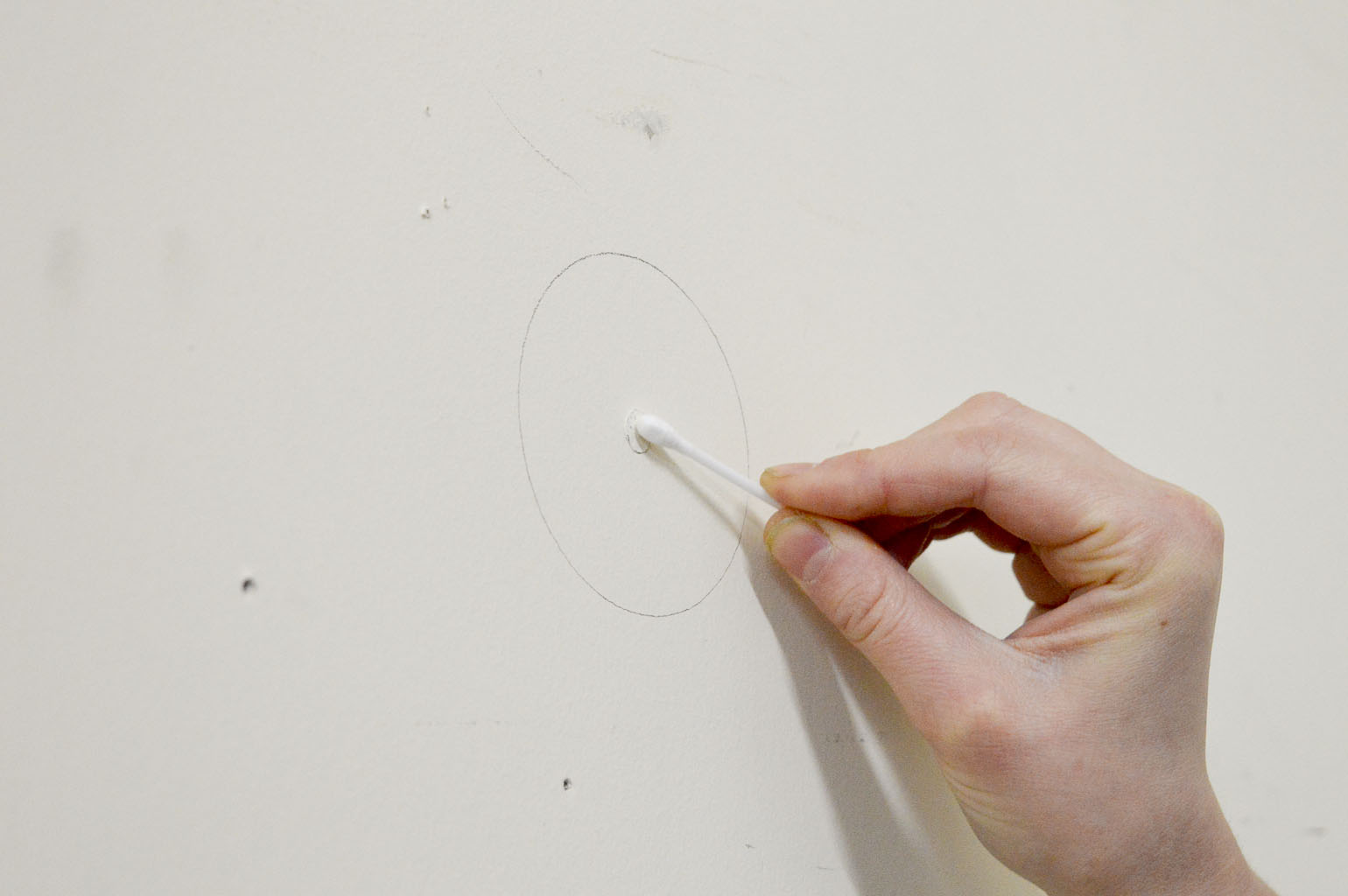My collaborator Andrew and I looked through the images we had collected and decided on a few sites around the studio to take a microbial sample.
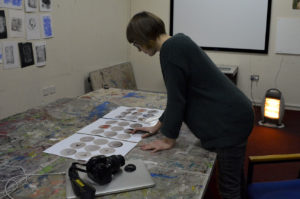
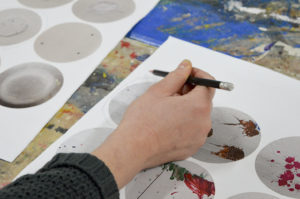
Once we had selected a site, we used a roll of masking tape to mark off a circular sample area. Using a circle sample area replicates the final site of the Petri dish and continues the circular motif found throughout this project. We used masking tape because it was readily available in the space, referencing the concept of ‘the artist studio’ and the reality of creative process.
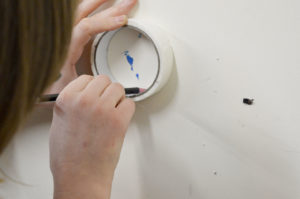
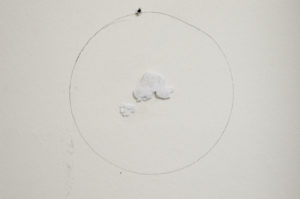
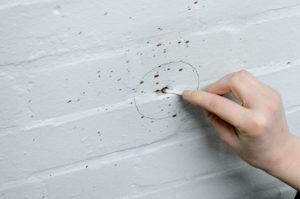
These swabs will be used on test plates of agar prepared earlier. I have considered a variety of approaches regarding how to take the swab from the sample area, for example utilising a ‘drawing’ style or ‘pattern’. This could seek to replicate or re-paint the shapes and splatters that appear in the sample area (the left-over evidence of art and process).
However because the patters that appear in each sample area can vary widely, I am concerned that this takes the process too far away from a scientific method, which seeks to control for variables.
Instead I settled on a pattern that references the 3×3 grid formation of Sol LeWitt’s Autobiography (1980). The sample area was swabbed across in 3 parallel lines, and then the same in a perpendicular direction. I followed each swab path 3 times (see diagram below). This creates the visualisation of a grid, and can be replicated across all sample area. By swabbing each path 3 times I hope to increase the chances of collecting enough microbes. I also turned the cotton bud as I swabbed, to cover it all around.

Again, I ensured that all of my materials and my hands were steralised before proceeding (as far as this was possible) using antibacterial gel.
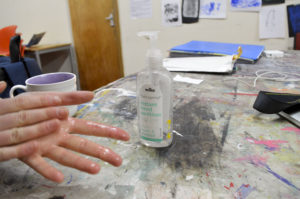
Once collected, the samples were placed into sealable plastic bags and labelled.
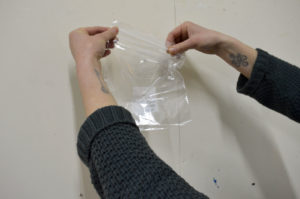
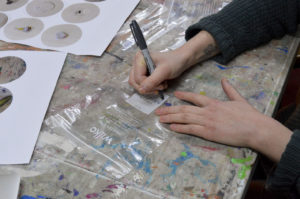
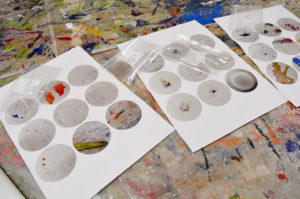
I will inoculate the Petri dishes using the same pattern as described above, creating a mirroring between the sample site and the dish.
Photos by my collaborator, Andrew Towse.
